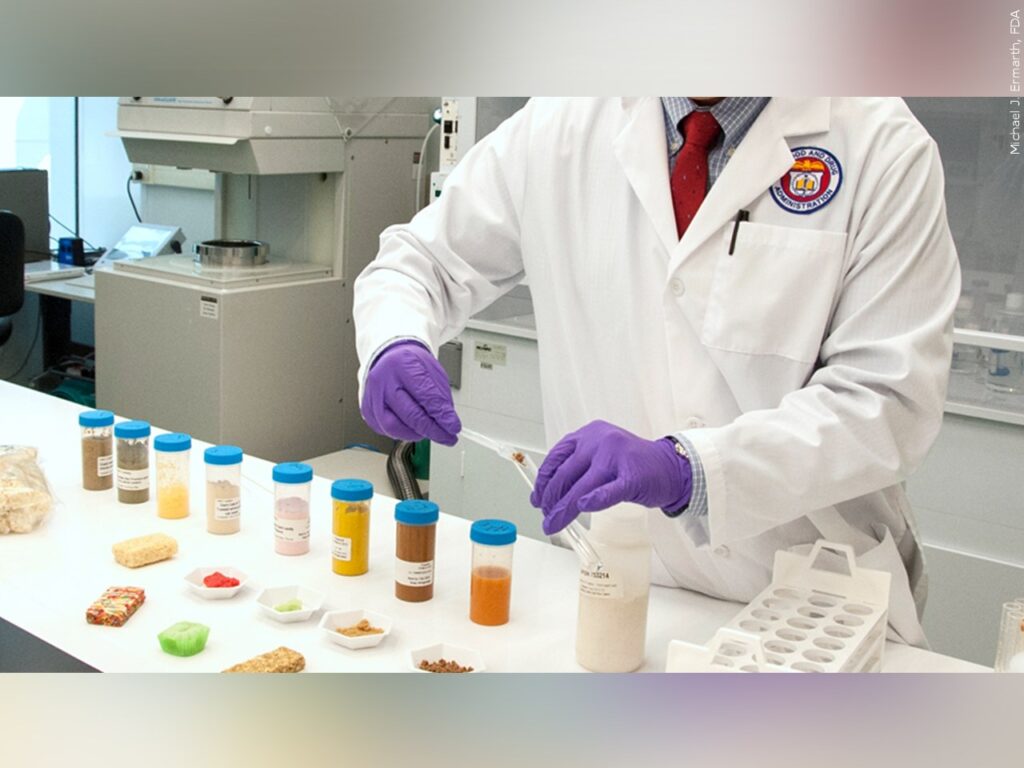Moms Across America tested fast food from the 20 most popular fast food chains and found 100% of samples contained concerning levels of lead and cadmium. Experts say even small amounts of metals may impact kids’ IQ and health.
by Suzanne Burdick, Ph.D., The Defender
This article was originally published by The Defender—Children’s Health Defense’s News & Views Website
Kids are consuming harmful amounts of heavy metals when they eat fast food, according to the nonprofit Moms Across America’s (MAA) report on heavy metals in foods sold by the U.S.’ 20 top-selling fast food restaurants.
One hundred percent of the samples tested by MAA contained “alarming” levels of lead and cadmium, and roughly 93% of samples contained detectable levels of arsenic, according to the test results.
The nonprofit tested fast food because many Americans eat fast food and some fast food chains supply school lunches.
The MAA testing found food with lead levels nearly 5 times the U.S. Food and Drug Administration’s (FDA) daily maximum for kids. According to the FDA, “Lead is toxic to humans and can affect people of any age or health status.
Additionally, the U.S. Environmental Protection Agency (EPA) points out that no amount of lead exposure is safe, especially for kids, as it can cause lifelong IQ damage.
“Lead is particularly dangerous to children,” the EPA says, “because their growing bodies absorb more lead than adults do and their brains and nervous systems are more sensitive to the damaging effects of lead.”

Both cadmium and arsenic are carcinogenic. MAA found food with cadmium levels more than 11 times higher and arsenic more than 3.5 times higher than levels the EPA allows in drinking water.
Even low levels of cadmium can cause kidney damage, and exposure to arsenic may harm the eyes, skin, liver, kidneys, lungs and lymphatic system, according to the Centers for Disease Control and Prevention.
Zen Honeycutt, MAA founder and executive director, in an Oct. 17 congressional briefing urged policymakers to support measures that would get organic, non-toxic food on kids’ lunch trays. She told The Defender:
“These reports show that Americans are being poisoned every day by fast food and school lunches. Our elected officials need to do their job, and find the political will to make policies that protect our children and the future of this country.”
“The security, success, and future of our country depends on the mental and physical health of our children,” she said in the MAA press release.
Commenting on the results, attorney Pedram Esfandiary, a partner at Wisner Baum, told The Defender:
“I can’t say I’m surprised. The food industry for years has dug in its heels and said these metals are in the environment at ambient levels and that there’s not much they can do about it.
“But we know this is not true because plenty of food companies source ingredients responsibly and their foods are not loaded with toxic metals.”
Esfandiary represents thousands of U.S. children who were diagnosed with autism or severe attention-deficit/hyperactivity disorder (ADHD) after consuming high levels of heavy metals in popular baby food.
He said, “The science linking heavy metals to brain injury which, in turn, can manifest as neurodevelopmental disorders like autism and ADHD, is robust.”
“Even at low levels,” he said, “arsenic, lead, and mercury can cause harm to children because of their small size and developing brains.”
Esfandiary added, “There is no safe level of heavy metals for young children so any food containing elevated levels of heavy metals should not be sold. Alternatively, parents should be warned about what they could be exposing their children to.”
Lead, cadmium reduce kids’ IQ for life
The nonprofit independent lab Health Research Institute (HRI) conducted the testing. HRI tested multiple samples from the country’s top 20 fast food chains, plus California’s In-N-Out Burger.
Though In-N-Out Burger is ranked no. 33, MAA’s board, based primarily in California, insisted the chain be included to test the claim that it offers some of the “healthiest” fast food.
John Fagan, Ph.D., HRI’s chief scientist and CEO, told The Defender he found it troubling that all of the samples had detectable levels of lead and cadmium because even a trace amount of either metal is known to reduce IQ.
“If children are exposed to lead or cadmium during the developmental phase of their life, it will reduce their IQ,” he said, adding:
“That reduces their ability to learn, their ability to be effective, successful members of society, their ability to earn good wages, their ability to adapt and make judgments about what’s right and wrong.
“All of these things are damaged by the heavy metals.”
Sonic’s cheeseburger had the most lead among all the samples, measured at 45.6 parts per billion (ppb)—which is more than triple the amount found in water the EPA deems unsafe to drink.
The EPA requires water treatment facilities to verify that its water has less than 15 ppb of lead, otherwise, the facilities must take “additional steps.”
However, the American Waterworks Association said that the EPA’s action level of 15 ppb is confusing because it leads some customers to assume water with lead at levels less than that is safe.
“But water professionals know that figure isn’t health-based, but rather a measure of the effectiveness of corrosion control,” the association added.
According to the FDA, the regulatory lead limit for bottled water is 5 ppb.
Taco Bell’s Beef Supreme Taco and Taco Bell’s Chicken and Cheese Quesadilla both tied for second highest, with 8.1 ppb of lead.
In-N-Out’s french fries had the most cadmium, measured at 57.9 ppb — which is more than 11 times the EPA’s cadmium limit for safe drinking water.
Other chains’ french fries also had high amounts of cadmium, with Sonic’s fries at 55 ppb, Jack-in-the-Box’s fries at 48.5 ppb and Dairy Queen’s fries at 36.9.
“This is presumably because potatoes are grown in the ground and absorb more heavy metals in the growth process,” MAA said.

Industrial fertilizers play a role
Panda Express’ Orange Chicken with White Rice and Panda Express’ Beef and Broccoli with Fried Rice had the most arsenic at 36.2 ppb and 32 ppb, respectively.
This wasn’t surprising, as rice is known to contain high levels of arsenic due to industrial processes and pesticides, MAA noted.
Fagan agreed, noting that a “substantial portion” of heavy metals in food comes from industrial farming practices, such as using phosphate fertilizers.
The EPA admits there is no safe level for arsenic in drinking water.
However, the agency on Jan. 23, 2006, set an enforceable limit of 10 ppb (i.e., 0.010 milligrams per liter), saying it was not feasible to set the regulatory limit at zero.
Fagan — who also spoke at the congressional briefing — and Honeycutt said regenerative agriculture practices that don’t rely on industrial fertilizers or pesticides are needed.
Natural geography also determines heavy metal levels
Fagan added, “There’s another source of heavy metals, though, and that source is simply the geology of that location.”
Fagan explained that U.S. regions have different amounts of heavy metals in the soil “therefore the land needs to be assessed.”
Different crops take up the heavy metals to a greater or lesser extent, so farmers “need to choose the crop that they’re growing on that land very carefully and choose ones that will not take the heavy metals up substantially.”
Fagan said that there are remediation methods for extracting heavy metals from the land, too. For instance, there are certain plants, such as hemp, that draw up a great deal of heavy metals from the soil.
Hemp can be planted—not as a harvestable crop for consumption, but as a means of pulling the heavy metals out of the soil — and then burned into ash.
The ash can be used in bricks or concrete to “stabilize” it so it will be “permanently taken out of the agricultural and food system.”
“It’s a very slow process, but it’s something that we need to take into account and take on long-term to clean the land up,” he added.













